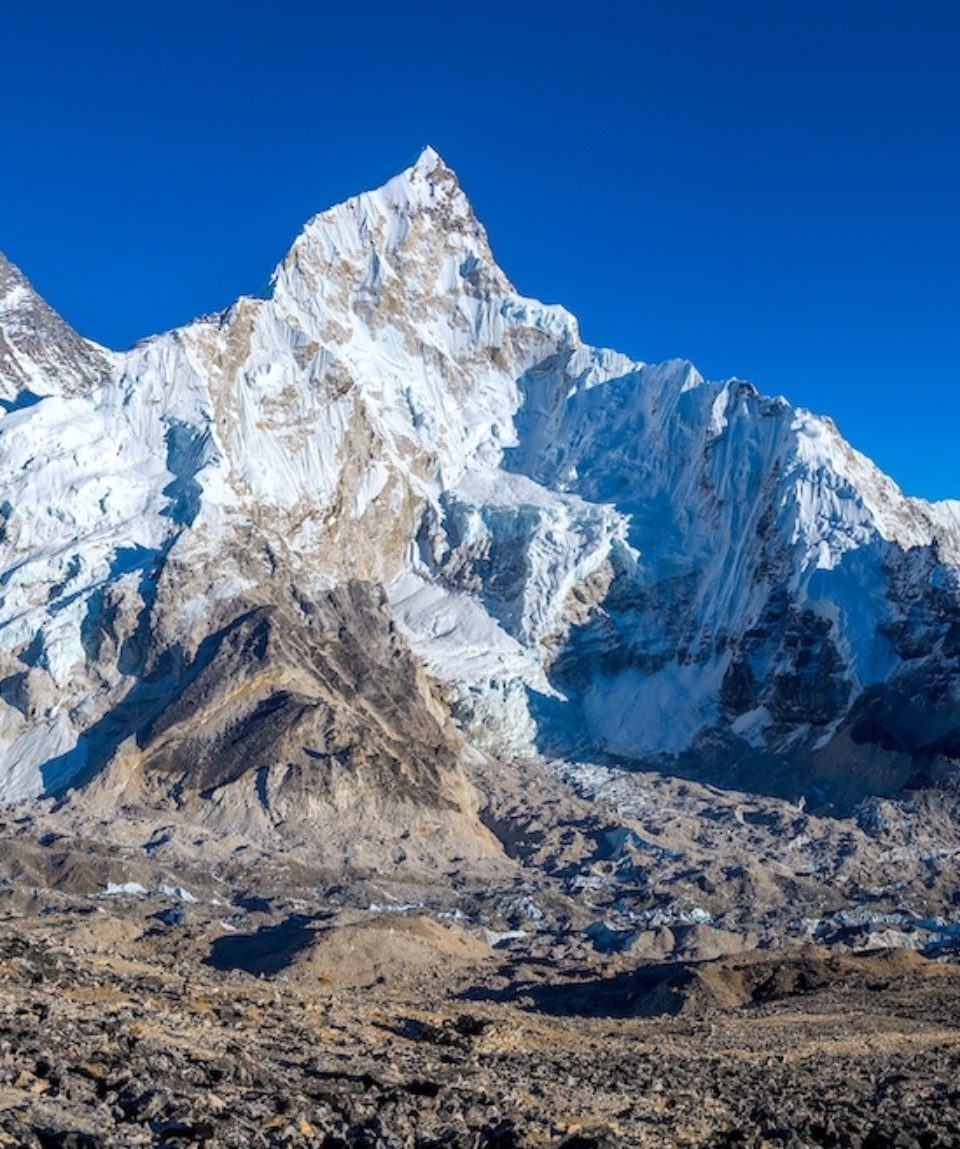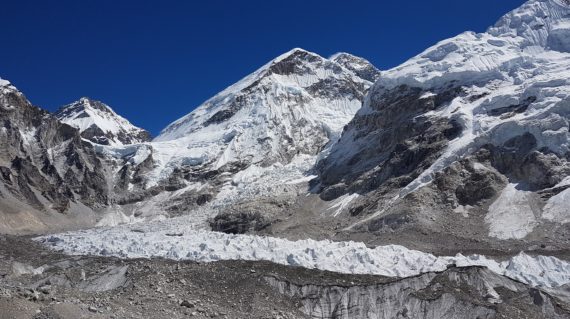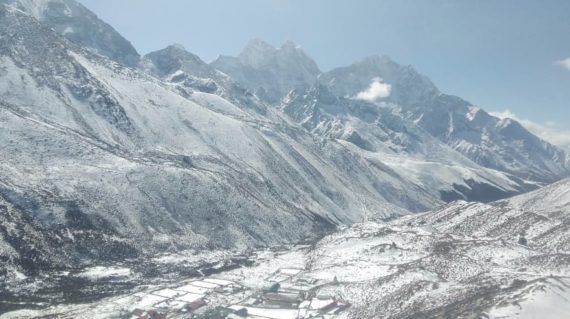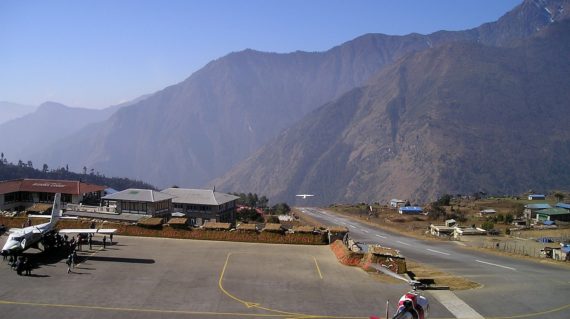
Everest Base Camp Trek: Conquer the Himalayas via Lukla
fromEverest Base Camp Trekking is not a luxury trekking; it is a once-in-a-lifetime adventure that will leave you with the most unforgettable memories.
Everest Base Camp Trekking is at the top of trekkers’ bucket lists all around the world. It’s because the walk to Everest Base Camp provides a spectacular close-up view of Mount Everest, the world’s highest mountain, from every direction.
The EBC journey, which centers around the world’s highest peak, Mt. Everest (29,029 ft/ 8,848.68m), is one of the best treks in the world. This trek (5,364m/17,598ft) will take us through stunning high-altitude scenery, Buddhist monasteries, traditional Sherpa culture, high-altitude animals, and snow-capped mountains, providing us with a natural excitement.
Most climb Mount Everest to test their mettle in the face of adversity. Some others simply wish to walk around the tallest peaks and take in the breathtaking vistas of Everest, Lhotse, Nuptse, Pumori, and Ama Dablam. As a result, this Mt. Everest trekking tour is the perfect option for individuals who do not want to climb the towering Everest but still want to marvel at the vistas of the world’s highest mountain. Deciding to embark on this adventure is a cause for celebration.
The Everest Base Camp Trekking combines the extraordinary splendor of well-organized routes with the raw, rocky aspect of the slope. Trekking to Everest base camp is not difficult, but it is not easy either. It necessitates a great deal of willpower, preparation, and a good deal of luck. Regardless, we have our support and we will assist you in reaching the base camp of mighty Mount Everest.
The Everest Base Camp trekking will take us to roughly 5650 meters, offering us the best vistas of many 8000-meter peaks. We can closely witness the Pumori, Nuptse, Lobuche, and other peaks, as well as the majestic Mt. Everest itself.
All in all, the Everest trek will provide us with a glimpse into the Himalayas’ secret splendor. Our hearts will be flooded with the downpour of heavenly delight when we see the breathtaking sights of the Khumbu glacier. During peak climbing season, we can also see the mountaineers’ colorful tents built up to service the enormous scenery.
For further more information, Contact us today!
-
Reviews 0 Reviews0/5
-
Vacation Style Holiday Type
-
Mountain
-
-
Activity Level Challenging
-
Group Size Small Group
Trekking Highlights:
- Find yourself on the lap of Mt Everest and get mesmerized by its majesty and size
- Witness the sun setting over Everest from the Everest Viewpoint at Kalapatthar
- Visit Sherpa villages with experiencing their rich culture and tradition
- Discover Namche Bazaar – the stepping stone for Everest
- Discover the Khumbu Glacier and Khumbu Icefalls
- Walk through Sagarmatha National Park and get a chance to witness some rare plants and animals
- Visit Tengboche Monastery and the one-of-a-kind monks
Why Trek with us?
Quality
To us, quality entails luxury and a sense of social connection. This link is guaranteed by us. The Everest Base Camp Trek has been devised so that we not only hike the trek but also build memories with ourselves and the people. We’ll meet new people, take pictures, share food, and settle in.
More than the walking we’ll be undertaking on this trek, the stories of Sherpa, the honesty of the monks at the monasteries, and the purity of the kids playing in the cold streets will elevate our spirits.
Giving back to the community:
Elite Explorer is a product of the Nepalese communities that directly or indirectly contribute to the trekking industry of this country gifted with elite mountains. We are not just travelers or trekkers but explorers who intend to give back something – even if it’s the very least of any form of contributions to the settlements, villages, and trails we walk past on our journey of the Everest Base Camp Trek
We will volunteer or manage a team that can help monks at Namche learn English for this trek. We may even join our team to help us teach. Likewise, we will help clean the nearby places at Namche Bazaar and donate some first aid kits to the medical clinics, stationery items and books to students at schools there, and food items to the locals throughout the trail.
We will also record the unheard tales about Everest and the culture that flows there as we believe that the Everest region shouldn’t just be commercialized through its mountains, but also the locals and their stories that have been staying there for years.
- Pick up and transfer to the booked accommodation by Elite Explorer representative from Tribhuwan International Airport Kathmandu. (please look for your full name card outside the arrival hall, +977 985 115 5251arrival assistance WhatsApp call or message)
- Twin sharing or double bed accommodation with buffet breakfast in Kathmandu.
- Guided, know your surrounding tour in Kathmandu.
- Private vehicle for ground transport from Kathmandu.
- Kathmandu-Lukla 40minutes flight including 10kg check-in baggage, and 5 kg hand carry bag. Extra kg’s cost subject to airlines T&C. (During heavy traffic the flight to Lukla is operated from Manthali airport Ramechhap. On such an event, the vehicle will be arranged from Kathmandu to Manthali.)
- Guided trek by our expert and experienced English-speaking trekking guide. (language guide can be arranged based on your preference.)
- A porter to help carry our trekking bags (trekking bags must not exceed 20 kg 2 pax combined )
- Locally available breakfast, lunch, and dinner including tea or coffee.
- Basic Mountain Lodges (famously known as tea houses) for accommodation.
- Guide Porter salary remunerations and insurance
- Trekkers Information Management System (TIMS) card
- Necessary documentation and Sagarmatha (Everest) National Park permit.
- First aid kit including oxygen meter
- Lukla- Kathmandu domestic flight including airport to hotel transfer.
- Government tax.
- Airport transfer upon completion of the program.
- Client personal expenses and bar bill including soft drinks
- Natural Calamities beyond our control and expenses incurred in such rescue services.
- Travel/Medical Insurance
- Lunch dinner in Kathmandu
- Day 01 Arrival in Kathmandu, transfer to the centrally located hotel
- Day 02 Kathmandu; Trekking Orientation and guide introduction with a last-minute shopping trekking essentials (trekking poles, trousers, warmers, etc)
- Day 03 Kathmandu to Lukla by air, 40 mins; Trek to Phakding, 3-4 hours
- Day 04 Trek from Phakding to Namche, 6-7 hours
- Day 05 Namche Acclimatization
- Day 06 Namche- Tengboche (3860m)
- Day 07 Tengboche- Dingboche (4410m)
- Day 08 Dingboche acclimatization
- Day 09 Dingboche-Lobuche (4900m), 5 hrs
- Day 10 Lobuche-Gorakshep (5184m), 3-4 hrs; to Everest Base Camp (5300m), 3-4 hrs
- Day 11 Gorakshep- Kalapathar Pheriche (4270m), 7 hours
- Day 12 Pheriche- Trek to Kenjumma (3550m), 5-6 hours
- Day 13 Kenjumma-Trek to Manjo (2800m), 4-5 hours
- Day 14 Manjo – Lukla, 5-6 hours
- Day 15 Lukla – Kathmandu, 40 mins
- Day 16 Kathmandu Free Day
- Day 17 Departure
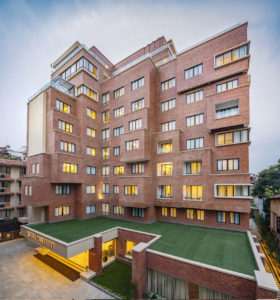

How many hours do we trek each day?
We will trek for six hours on average, but depending on the region you trek in, you might go for nine hours straight, including breaks for meals.
What transportation will it be to the trekking starting point?
Depending on the trekking region, either private transportation or air travel will be used.
Can I leave the things behind before heading for trekking?
Yes, we’ll tag your bag and keep it at your accommodation until you get back. Likewise, you should travel as lightly as possible when trekking.
Is it very cold in Kathmandu on my arrival?
There are four seasons and 300 days of sunshine in Nepal. As a result, Kathmandu’s lowest recorded temperature is -3 degrees Celsius, or 26.6 degrees Fahrenheit. However, while trekking, the temperature may drop to -13 degrees Fahrenheit or -25 degrees Celsius. For more details on what to pack and bring please contact your dedicated travel consultant or you can also contact us via E-mail.
Do I need to be extra careful of altitude sickness?
Our itineraries are made to give you plenty of time for acclimatization, reducing the likelihood that you will have altitude sickness. Every evening before or after dinner, our extremely knowledgeable guide will give us a briefing for the following day’s trekking, including instructions to prevent altitude sickness over 3500 meters. You must notify our guide right away if you have shortness of breath, headache, exhaustion, nausea, vomiting, a rapid heartbeat, or insomnia since altitude sickness can be fatal.
How many kg of bag pack am I allowed to carry?
The greatest option is usually to trek light. The best-recommended backpack weight is 10 kg for trekking bags and 5 kg for carry-on luggage because one must also include basics. (It also serves as the flight to Lukla’s weight restriction.)
Will there be a porter to carry my bag pack apart from the guide?
Yes, a porter will assist you in carrying the trekking backpack packs.
Can you tell me about the food in the mountains?
Most of the food is freshly prepared, but meats may have been stored for a while. Freshly prepared Daal and Bhat, a staple of traditional Nepali cuisine, are the finest.
How basic are tea houses, can I shower every day?
A basic bed, private or shared bathrooms, cold water in the absence of electricity or sunlight, charging the wifi battery, and the absence of a room heater. This is how simple tea houses seem. Further, during the cold winter, the water freezes in the pipe leaving no running water.As mentioned earlier, having a hot shower (or bucket full of hot water) is feasible in most tea houses, however, if unfavorable circumstances like an electricity cut-off occur, you may have to wait to take a hot shower.
Is there wifi or cellular signals in the mountains?
In the tea houses along the trails, there is wifi, however, the signal strength and speed may not be as advertised. On request, Team Elite Explorer will provide you with a local sim card for data subscription.
How about power, will there be charging points?
There will, in fact, be charging ports. Be considerate when charging your electronics as tea houses provide shelter for other hikers as well.
In case of medical issues, how will I get assistance?
Our guide will evaluate the case according to its seriousness, seek advice from the office as necessary, and then decide on the spot whether to transport the patient to the nearest medical facilities or call for help. When trekking in Nepal, kindly make sure to have comprehensive travel medical insurance.
Can 3 years and 80 plus age trek in the mountains?
Every age group can find the ideal trekking trails in Nepal. So every one of any age can hike in the mountains. When working with infants and the elderly, we take extra precautions both in the planning of the itineraries and on the ground.
Lastly, How fit should I be for trekking?
For the trek, you need to be both physically and mentally prepared. The outcome of your adventure entirely rests on you. We advise selecting the trekking routes based on your degree of fitness. There is little doubt that shorter routes are simpler than longer ones. A higher level of fitness will be needed for the longer treks. So, try to be in top physical shape.
